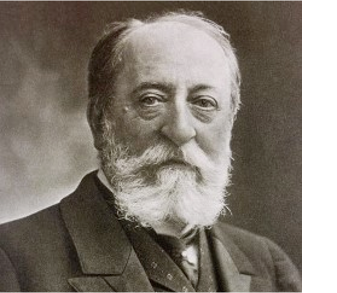


Gifted pianist, organist and composer as well as poet and writer of essays and plays. St. Saëns was generally not a pioneer in music, but wrote some beautiful scores such as the "Piano Concerto No. 2", "Symphony No. 3", the symphonic poem "Danse Macabre", the opera "Samson et Dalila", and probably his most widely performed work, "The Carnival of The Animals".
Probably the most remarkable child prodigy in the history of music, the young Saint Saëns could read, write and play piano by the age of 2. At 7, he was giving his first concerts as a pianist and an organist. When he was 10, he made his public debut by playing one of Beethoven's 32 sonatas from memory. By his early 20s, he had gained the admiration of Liszt, Rossini and Gounod for his composition skills.
His music style was traditional and he embodied the classical period of music, despite living in the era of Romantic music creativity. But although his music style was traditional, his compositions were original.
Music was not the only field where St. Saëns excelled as a composer, pianist and organist. He was also an author of musical, scientific and historical topics, a literature critic and a multilingual and seemed to be an expert in mathematics, astronomy and philosophy. He also travelled and wrote about his travelling before spending his last years in Algeria.
Saint-Saëns could sightread scores of tremendous complexity perfectly at first sight. The legend has that Wagner was stupefied when Saint-Saëns played through several of his epic operatic music at the piano as though they were the easiest task on earth.
His marriage was a complete failure and marked the saddest chapter of his life. His 2 children died with 6 weeks difference the one from the other and the marriage ended a few years later, after St. Saëns blamed his wife for this drama.
Despite his many talents and brilliant mind, and the fact that he inspired and influenced many music students and French composers, his many creations did not gain much popularity, with the exception of a few works, notably "The Carnival of Animals" and "Symphony 3".